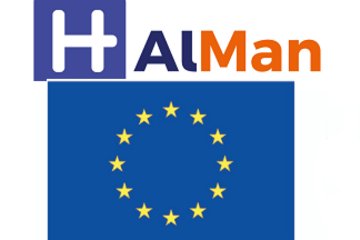All genres
61.
Talk
Crystallographic investigations of a growth series of Apatosaurus long bones: Implications for biomechanics. 71st SVP meeting, Las Vegas, NV, USA (2011)
62.
Talk
Texture and nanostructure of Sauropod bones: Implications for biomechanics. 1st International symposium on paleohistology, Barcelona, Spain (2011)
63.
Talk
Comparison of apatite crystallite sizes in sauropod and mammal fossil bones. 6th Bone diagenesis meeting, Poppelsdorfer Schloss, University of Bonn, Germany (2009)
64.
Talk
In-Situ Investigation of Creep and Creep Damage Using Synchrotron Microtomography. Workshop on X-Ray Micro Imaging of Materials, Devices and Organisms, Dresden, Germany (2008)
65.
Talk
Application of microtomography to engineering materials. Workshop on X-Ray Micro Imaging of Materials, Devices and Organisms, Dresden, Germany (2008)
66.
Talk
Defect and Stress Analyses in Novel Fe-Mn-C Steels by X-Ray Diffraction. MSE08 Materials Science and Engineering, Nürnberg, Germany (2008)
67.
Talk
Phase Composition and Internal Stress Development during the Oxidation of Iron Aluminides. MSE08 Materials Science and Engineering, Nürnberg, Germany (2008)
68.
Talk
Experimental Investigations on the Influence of (Ta,Nb)C and Processing Parameters on the Formation of Wear Resistant Graded Surfaces in Cemented Carbides. MSE08 Materials Science and Engineering, Nürnberg, Germany (2008)
69.
Talk
In-Situ Investigation of Grain Rotations During Tensile Straining of Steel Wires. MSE08 Materials Science and Engineering, Nürnberg, Germany (2008)
70.
Talk
Tomographic method for the evaluation of activation energy of creep. MSE08 Materials Science and Engineering, Nürnberg (2008)
71.
Talk
In-situ synchrotron tomography investigation of creep damage. SPIE Optics + Photonics 2008, San Diego, CA, USA (2008)
72.
Talk
Synchrotron XRF analyses of element distribution in fossilized sauropod dinosaur bones. Denver X-ray Conference, Denver (2008)
73.
Talk
In-situ investigation of creep damage using synchrotron X-ray microtomography. VIII Simpósio Mecanica Computacional, SIMMEC 2008, Belo Horizonte, Brazil (2008)
74.
Talk
Characterization of induction assisted welds in high strength steel grades. 2nd International Conference on Steels in Cars and Trucks 2008, Wiesbaden, Germany (2008)
75.
Talk
Characterization of Induction-Assisted Welds in High Strength Steel Grades. Steel Conference 2008 - New Developments on Metallurgy and Applications of High Strength Steels, Buenos Aires, Argentina (2008)
76.
Talk
In-situ microtomographic investigation of creep in leaded brass. VI-PNAM Symposium, Berlin, Germany (2008)
77.
Talk
Stahlforschung am MPIE - Tradition und Perspektiven. Festkolloquium Prof. O. Pawelski, 75 Jahre, Stahlzentrum, Düsseldorf, Germany (2008)
78.
Talk
Charakterisierung der Mikrostruktur und Verformung in Mg-Mg-Laserschweißnähten und Al-Stahl-Reibrührschweißverbindungen. 54. Metallkunde-Kolloquium Werkstoffforschung, Lech / Österreich (2008)
79.
Talk
Investigations of Wear Mechanisms in Diamond Tools with Fe-Based Matrices Reinforced with WC-Co Particles. Intern. Symposium on Friction, Wear and Wear Protection, Aachen, Germany (2008)
80.
Talk
Sauropoden-Dinosaurier: Giganten aus nanokristallinem Material. 29. Adelbodener Werkstoffseminar des IWK 1 der Universität Karlsruhe, Adelboden, Schweiz (2008)











